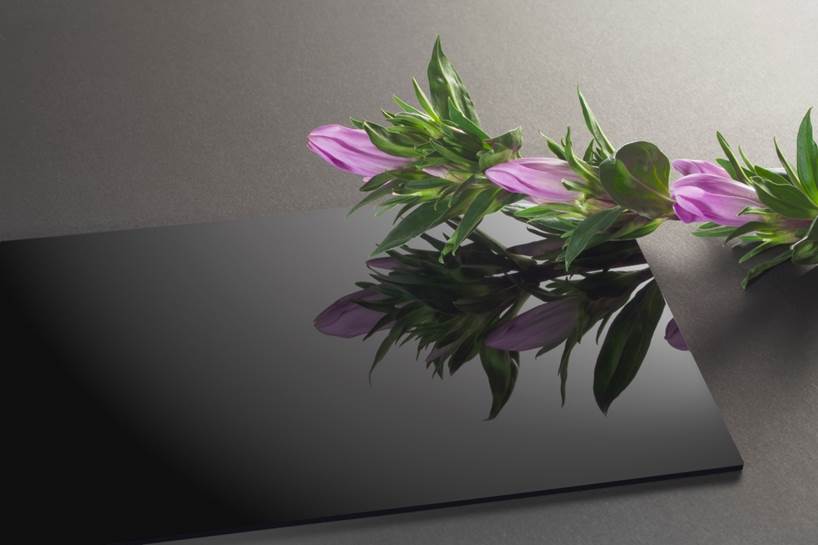August 17, 2016

 NEC Corporation, a Japan-based global networking and IT giant, today announced that, working in collaboration with the Kyoto Institute of Technology and Japanese lacquerware artist, Dr. Yutaro Shimode, a new bioplastic has been developed that mimics the much-prized “Urushi black” color of Japanese traditional lacquerware. Derived from cellulose from grasses, trees and other non-edible, renewable plant resources, the material opens up a myriad of new opportunities for ‘Urushi black’ applications.
NEC Corporation, a Japan-based global networking and IT giant, today announced that, working in collaboration with the Kyoto Institute of Technology and Japanese lacquerware artist, Dr. Yutaro Shimode, a new bioplastic has been developed that mimics the much-prized “Urushi black” color of Japanese traditional lacquerware. Derived from cellulose from grasses, trees and other non-edible, renewable plant resources, the material opens up a myriad of new opportunities for ‘Urushi black’ applications.
The Japanese art of Urushi is a tradition dating back 10,000 years. This natural lacquer is sourced from the sap of the indigenous Urushi trees, which contains a resin that polymerizes, hardening into durable, plastic-like substance when exposed to specific humidity levels and and air temperatures. The lacquer is said to be able to withstand acid, alkali, alcohol and high temperatures, and also protects against salt, mold and mildew. However, even today, Urushi lacquerware takes time to make, as the processes that go into producing it are still carried out by hand. Conventionally, Japanese lacquerware is made by substrate processing of the surface of wood products, manual coating with lacquer (a mixture of natural lacquer substance and coloring agents), and letting the lacquer harden, followed by repeated polishing of the product.
Yet can a bioplastic ever hope to match the natural beauty of the traditional Urushi Black lacquerware? According to NEC, it can at least come very, very close.
NEC has developed a unique technology for mixing additives to adjust the coloration and light reflectance of the material. Black coloring agents and highly refractive organic ingredients are mixed with cellulose resin as special additives. By dispersing the additives into fine particles, optical properties that approach the deep sheen of “Urushi black” high-grade Japanese lacquerware, such as low brightness, and high glossiness, are achieved. And, importantly, the new bioplastic can be injection molded, bringing the mass production of ‘Urushi black’ products within reach for the first time.
“In response to the depletion of resources and food shortage problems, the need for non-edible-plant-based plastics is increasing,” said Dr. Masatoshi Iji, Research Fellow, IoT Devices Research Laboratories NEC Corporation. “We have now developed a new bioplastic that, in addition to high functionality, realizes the decorativeness of Japanese lacquerware, which is highly evaluated throughout the world, and illustrates a beauty well beyond what petroleum-based plastics can provide.”
NEC has been a pioneer of bioplastic development since 2000. In 2007, in collaboration with Kao Corporation, NEC developed an unprecedented high-performance, flame-retardant bioplastic with a high plant component ratio using polylactic acid as the main component. From 2010, this material has been progressively introduced across six product groups, including NEC's business desktop computers and commercial payment terminals. And in 2014, NEC and Kao Corporation announced they had jointly developed a flame-retardant polylactic acid composite flame-retardant bioplastic with the world's highest plant component ratio (over 75% of the organic material in the composite is polylactic acid) and superior durability in terms of chemical resistance, light resistance, and surface hardness. NEC has since applied the biocomposite for internal components of outdoor gas station fueling systems.
This latest development was carried out in collaboration with the Kyoto Institute of Technology’s Future-Applied Conventional Technology Centre, which is known for its outstanding achievements in future-applied conventional technology research (scientific analysis of traditional crafts and their applications in advanced material science), and Dr. Yutaro Shimode, a prominent Japanese lacquerware artist.
Shimode created a Japanese lacquerware “Urushi craft” model that served as the standard for the advanced optical properties exhibited by high-quality Japanese lacquerware. Scientific analysis was performed on Japanese lacquerware at the Kyoto Institute of Technology. Based on the results, NEC then developed an optimized technology for modifying and mixing of the additives.
Going forward, NEC will pursue business partnerships aimed at commercializing the new bioplastic in durable products and high-grade materials that require a high level of decorativeness, such as the interior components of luxury cars.
About the Author(s)
You May Also Like


